Types of electroconvector, principle of operation, model offered on the Russian market. Useful advice to the buyer.

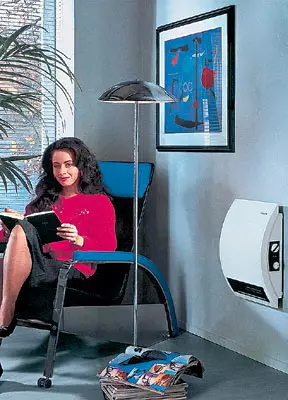
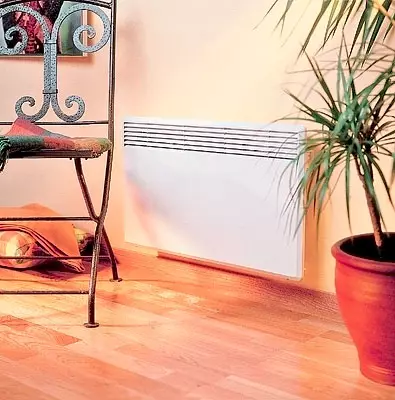
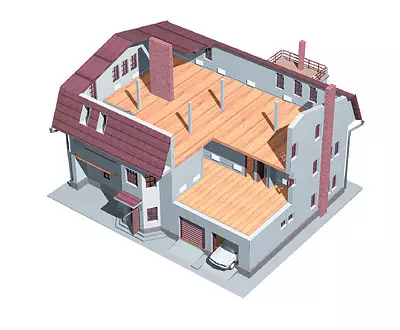
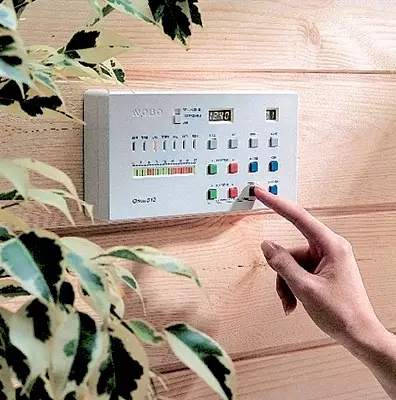
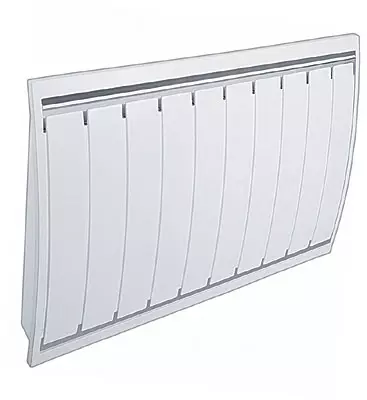
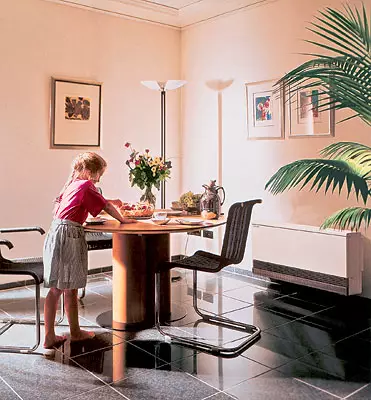
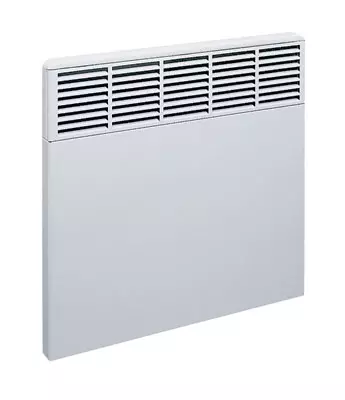
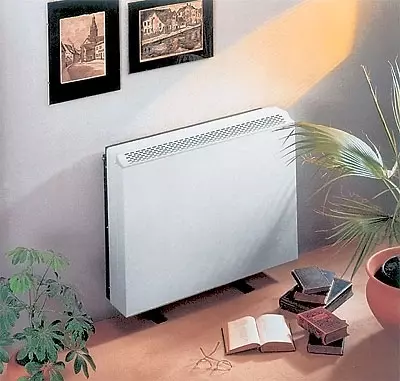
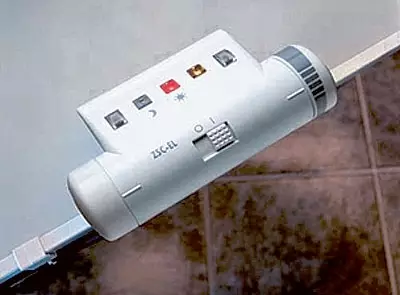
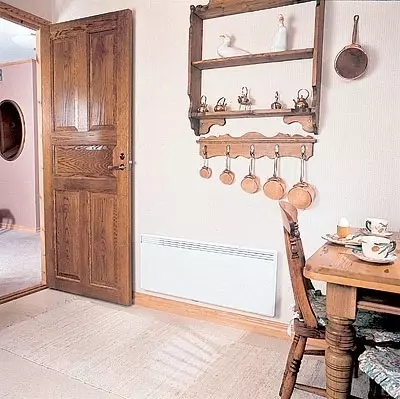

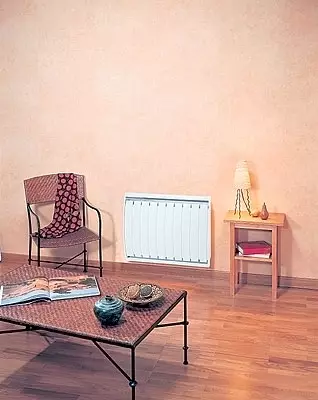
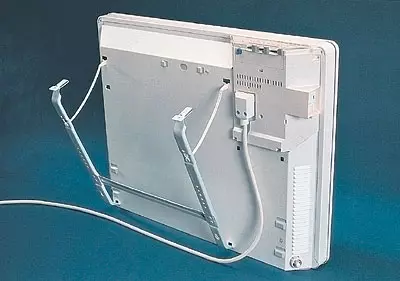
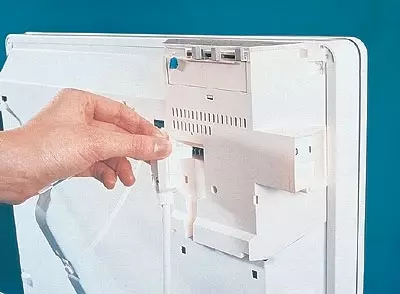
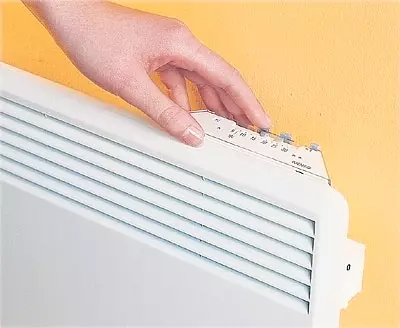

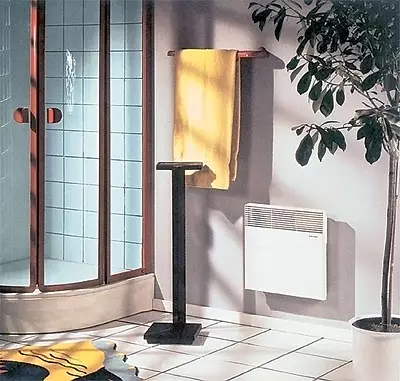

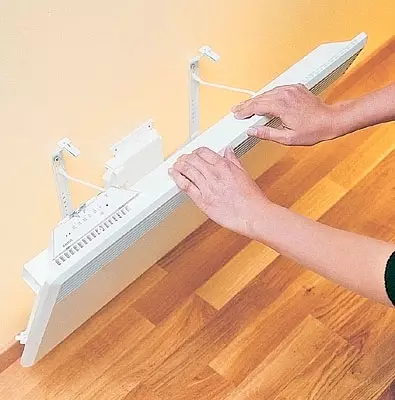
The choice of the main heating system of the cottage is not simple. Along with gas, liquid and solid fuel boilers, the operation of which requires the supply of gas communications or a permanent stock of fuel, there are effective electrical heating systems. Single floors we told above. Ateper will discuss the system based on electroconvectors that convert electrical energy to heat that is transferred with natural air flows.
There are outdoor (moveable) and wall-mounted (stationary) convectors. On the basis of the latter, you can quickly and without significant costs to mount the heating system in your home.
Any modern electroconvector has a hollow rectangular metal case that contributes to the formation of natural traction. The lifting part of the case is set low-temperature heating element (TEN) with a plate radiator. Work on the work. The panel gradually passes the cold air coming from the lower inlet holes, and it is flowing for a TEN. The heated air flow rises up and comes out through the top opening of the panel, distributing in terms of the size of the room. Thus, heat transfer is carried out using natural air circulation, which is called convection in physics. Hence the name of the heating device itself.
All electroconvectors are equipped with a reliable security system and disconnect if a foreign object has fallen or an obstacle to the yield of hot air appeared. Also necessarily provides for protection and from the hopping voltage increase.
Unlike traditional heating devices (let's say, electrocamines or oil radiators), convective wall modules in working mode are not heated so much: the temperature of the TEN usually does not exceed 100 ° C, and the maximum temperature of the outer front surface of the panel is usually not rising above 60c. Compared to the heating system based on heated floors, the electroconvectors, with an almost equal cost of electricity, much easier to install, operation and repair, since they are placed on top of the finishing wall coating and are easily accessible for repair or replacement.
However, all the heating systems that use the principle of convection have a common significant drawback: they warm up the room unevenly, especially in height. Warm air flows having a smaller density accumulate under the ceiling, and the floor has a relatively low air temperature (this features convectors from warm floors). In addition, circulating streams are carried away by dust, and it will eventually settle on the walls near heaters in the form of dark strips. Therefore, the overwhelming majority of the last generation convectors, air grids passing the heated air are not in the upper part of the panel, but on its front surface. Airplane blinds are located under a certain, calculated angle of inclination, due to which the air flow is directed not upward, and in the central part of the room (vertically). The result is warm and cold streams are mixed in the most optimal way, providing uniform heating of heated rooms, and the tortuous dust does not settle on the walls. If the room is large, an additional fan is installed to accelerate the warmlation.
Tenny ...
The most inexpensive convectors presented in our market are equipped with a heating element in the form of an open spiral of incandescent. This substantially reduces the equipment (prices here vary from $ 40 to $ 60, depending on the model), but limits the scope of their use due to the lower class of protection. For example, EWT (Germany) panels with a spiral element are not recommended to be installed in wet rooms. In addition, the spiral has a rather high operating temperature (160c), therefore dust is intensely decomposed on it, and combustible substances entering it can lead to fire. But the heating rate of air increases, and if you are going to mount such equipment in utility or counterfeit rooms, it is possible to save. The same EWT convectors (models 250mm high, depth 240mm and length or 660, or 760mm; Power - from 800 to 2000W) have a thermostat and a stepped power controller, and a panel of a length of 760mm is a built-in fan that promotes more intensive space warming up.Most of the modern convectable panels are supplied with a low-temperature heating element, which consists of a steel tube, which is placed in the incandescent, and the aluminum diffuser (radiator), which ensures more efficient heat transfer of heat from the air. This is exactly what the heating elements are arranged, for example, in the convectors of the brand of EVNA produced by Vika International (Dnepropetrovsk, Ukraine). Moreover, the TEN itself consists of two heating rods, which makes it possible to turn on the heater or on the complete or half-power.
But since the linear expansion coefficient with heating in aluminum is about twice as much as steel, steel tan and an aluminum radiator are expanding unequal: when heated, they are rubbed over each other and wear out with time, and the heating process itself begins to be accompanied by characteristic crackling. The violation of the dense contact between the radiator and the Tan makes it difficult to heat the heat exchange, which can turn into local overheating and lead to the brave of the Tan. Atuta is not far to the fire hazardous situation.
Designer from heat
When building an autonomous heating system of a private house from Noirot convectors (MEMOPROG and ECO6 models), a programmer cassette can be used as a control device. Fully finished to work, it is simply inserted into a special nest of one of the convectors, next to the built-in control unit. Such a cassette is able to control, depending on the model, optimally nine, and as much as possible even twenty heating modules. Another option of control-scientific console. Some consoles can cope with a very large amount of module up to sixty. For example, control commands will be supplied either by a special cable or directly by the supply wiring by means of a carrier frequency signal. But that's not all. The command on switching on, turning off or changing the mode can be accepted by phone!
The system controlled in this way allows you to set and automatically maintain in each room individual thermal mode. Optimal heating regimes are selected and programmed taking into account the real need for warmth by the day of day, by day, weeks and even longer periods of time. Due to this optimization, it is often possible to maintain the average energy consumption at the level of only 30% of the nominal. Recall that the system consists of quite independent modules (individual convectors), which strongly resembles a set constructor. The user can, like cubes, build heating along the planned scheme, disassemble and again to build, remaining confident in the constant reliability of the instruments. Despite the fact that such a system has been implemented only by Noirot, such flexibility and freedom is a very successful stimulus for other manufacturers.
The most progressive models of convectors are equipped with a monoblock heating element, that is, the TEN and the radiator constitute a single integer. Here every manufacturer has their own know-how. For example, the French company Noirot has developed and patented the heating element called RXsilence. The uniqueness of its constructive solutions of the incandescent, surrounded by a dense backfill of the smallest magnesia powder and tightly pressed into the solo-polished silicone body with fins. Moreover, the materials are chosen so that they have the same thermal expansion coefficient, which means that the mutual movement of the structural elements when heated and cooled is insignificant. This ensures the durability of the element and the full silentness of its work. The aorabling is thought out so that the heating element is "transparent" in the vertical projection, due to which the dust does not accumulate on its surfaces and does not burn. Similar design and in Tan from NOBO (Norway), in which the incandescent thread is placed in a quartz backfill. The service life of such Tan - from 15 to 20 years.
... and thermostats
The presence of a thermostat allows the electroconvector with great accuracy to maintain the specified temperature in the room. Thanks to this device, the convector panel acquires the ability to independently turn on and off when the air is heated to a given temperature. Thus, the device does not work constantly, but in the mode of short inclusions, which leads to a small economy of electricity.In electrical connector, both electromechanical and electronic combined thermostats (air temperature surprise) are used. The disadvantages of the thermostats of the first type are the relatively low accuracy of measuring air temperature (0.5-2C) and noise (bimetallic sensors when triggered, which causes users a certain discomfort, especially in the middle of the night silence). Electronic systems sensors measure the temperature of the incoming cold air approximately every 40 ° C and a signal to the thermostat, which supports the specified mode with an accuracy of 0.1C. Such control blocks are 2-3 times more expensive, but more reliable and absolutely silent. If you specify the same temperature in the thermostats of both types, the electronic device due to the greater accuracy will give savings of 3-4% of electricity compared to electromechanical. In addition, convectors can be equipped with electronic thermostats with timers, allowing you to choose different temperature in daytime, in the evening and at night, as well as on every day of the week and significantly save energy.
Thus, the Convectors of the Unique series from Siemens are designed to work with a variety of local and central control devices. The simplest of them is a Siemens AutoSaver-removable electronic thermostat with a timer. Ashable "Troubled" Central Timer-thermostat Siemens Digiheat using radio frequency signals is able to control heating from one room (Digiheat1) to four rooms of rooms (Digiheat4). The control signal is transmitted within a radius to 80m by radio communication (frequency433 MHz) to the removable receiver of each heater. The following modes are possible: Comfortable (5-30C), economical (5-30C), Protection against freezing (5-15C). The temperature level according to the program may change every hour of any day of the week.
Firms specializing in the release of convectors make models of both the integrated thermostat and without a thermostat. In the built-in thermostat, the sensor will be obviously less accurate, because it affects the temperature of the convector body. Warning modules of this type, the regulator is usually separated in relative units and requires an individual calibration, it allows you to achieve conformity between the real temperature in the room and the regulator position. The regulator of the external thermostat is placed in degrees and takes into account the temperature of the space of space in which it is installed. As a rule, the combined thermostat is attached to the wall at an altitude of 1-1,5m from the floor, preferably without drafts. It should be borne in mind that at a distance 50cm and 1.5 m from the floor, near the inlet door or window, the temperature will be different.
The same if several convectors are installed in the room. It is more expedient to use one thermostat, as a rule, electronic, for the entire heaters group, this significantly reduces the total cost of equipment. Thereby ensures the flexibility of control, that is, the exact maintenance of the desired temperature in the room at any time.
For example, in the convectors of the company Noirot, the switch can be installed on programming mode. In this case, the heating panels will be controlled by a single program through external (supplied) or internal programmer of one of the convectors. The programs are recorded on a special cassette placed in the control unit. The Melodie Evolution series heating panels are equipped with a control system with an electronic thermostat programmed by 4 prints (comfortable, economical, "anti-massaging" and stop) and a switch designed for the same modes plus programming. Knowvectors can be connected to a special MEMOPROG control cassette, which is purchased for a fee. The SUPER SPOT series connects the ECO6 control cassette: the programs already laid in it regulate the operation of heaters throughout the week, including the weekend.
Adjustable temperature range in modern convectors - from 5-7 to 28-30C. Using the possibility of programming, you can set any modes of operation. Let's say if you come to your country house exclusively on the weekend, you can configure the system so that on working days the minimum temperature (+ 7c) is maintained with the minimum power consumption, and the convectors have heated the building to a comfortable level. And, most valuable, maintaining the positive temperature in your absence (this is called the "Antizarzia" mode) will help to avoid emergency situations in the premises, where there are water gates (kitchen, bathroom, toilet), and will be favorably affected by the durability of carrying structures. Essential conditions are not uncommon - emergency disabling power supply. As a rule, the heat stored by the house is enough for 20-30 hours. According to existing standards, the power supply must be restored significantly earlier. As soon as the operation of the network resumes, the electroconvectors will start working. Is the same, if you plan to leave a house for a long time, it is better to be restrained and drained all the available water shutters.
| Firm | Model | Power, W | Notes | Price, $ |
|---|---|---|---|---|
| Noirot. | SPOT E-II series | 750-2000 | Height 440mm. | 115-169 |
| Axane series | 750-2000 | Height 440mm. | 126-178. | |
| Series Melody Evolution | 750-2000 | High, 650mm | 162-212 | |
| 750-1500 | Plinth, 220mm | 173-213 | ||
| Memoprog. | - | Cassette management | 57-167 | |
| Eco-6. | - | Cassette management | 82. | |
| NOBO. | C2F Series | 250-1500 | Height 200mm | 98-146. |
| C4F Series | 500-2000. | Height 400mm. | 113-164. | |
| Series K4N. | 250-2000 | Height 400mm, only for rooms with high humidity | 82-148. | |
| R 80 XSC. | - | Single electronic thermostat | 23. | |
| R 80 PDE | - | Dual electronic thermostat with timer (9 fixed programs) | 62. | |
| R 80 UDF. | - | Dual electronic thermostat with timer (12 fixed programs) | 88. | |
| Thermor. | - | 500-2000. | All types of panels | 66-144 |
| Siemens. | Basic series | 400-2000. | Models height 200 and 400mm | 75-113. |
| Compact series | 500-3000. | Height 425mm | 100-172. | |
| Complete series | 300-1500 | Plinth panels, 200mm | 109-142. | |
| Dimplex | ELITE series; 6moders of various sizes and capacity (USAG 250W) | 500-2000. | Height of all panels 174mm | 35-86 |
| TD901 | - | Bimetallic thermostat (Max. Load 22a) | twenty | |
| DTK-DP. | - | Built-in thermostat (Max. Load 17A) | twenty | |
| 4800A. | - | Electronic thermostat (Max. Load 17A) | 60. | |
| Elegance. | Models of four sizes | 500-2000. | Height of all panels 420mm | 60-117 |
| Dipole Corporation (Sratov) | VPS-2000 | 2000. | Height 520mm, length 320mm, depth of 82mm panel | 40. |
| OJSC "Mayak" (cityvinnitsa, Ukraine) | Convector "Termia" of seven sizes | 500-2000. | Height of all panels 460mm | 15-40 |
| EWT. | Clima 215nt. | 2000. | 660450200mm | 47. |
| Clima 240tlg. | 2000. | 755450220mm; Model with fan | 77. | |
| Stiebel Eltron. | CNS series; 8 models of various sizes and capacities (USAG 250W) | 500-2500. | Height of all panels 450mm | 76-109. |
| Atlantic | F17-3 series, with electro-mechanical thermostat | 500-2500. | Height of all panels 450mm | 75-118 |
| F117 series, with electronic thermostat | 500-2000. | Height of all panels 450mm | 80-114. |
Size matters
In its geometric dimensions, convect panels are divided into three main groups: high (height 460-650mm), medium (no more than 330 mm) and narrow, or plinth (height 150-200mm). Dimensions in length range, depending on the power and execution of the device, from 295 to 1035mm. Avtot Depth is almost constant - no more than 90mm.
As a rule, manufacturers produce models with a capacity of 0.5 to 3 kW with a step of 250W and weigh from 3 to 9kg. Impregnity, and mass depend on the dimensions of the panels. High panels create cravings as in a conventional chimney, significantly increasing heat exchange, so their length is insignificant. Plinth convectors are designed to install under low windows or stained glass windows. The temperature of the heating element in the models of this type is slightly lower than that of high devices, and to maintain the heat dissipation of the convector, it is made longer (sometimes up to 2,5m). As a result, low heaters work as efficiently as high. By the way, the plinth convectors create smaller convection streams, providing a more uniform heating of air, especially at the bottom of the space space.
Today in domestic stores you can meet convectable electrical heaters from companies such as Atlantic, Noirot, Thermor (France), Dimplex (Canada), Nobo (Norway), Elegance (Finland), Stiebel Eltron, EWT, Siemens (Germany), Protherm (Czech Republic ) other. Electroconvectors are also produced in Russia and the Middle abroad by the "dipole" enterprises (Sratov), Delisot (Miass), Ladoga Plant (Kirovsk), Mayak companies, Vika International (Ukraine) and Other. Russian instruments for technical specifications are little inferior to imported, but not so perfect in design.
Capital costs of installing the main heating system of the private house on the basis of electroconvector elevations range from $ 4 to $ 8 for 1m2 heated area. It is much cheaper installation of warm floors or a standard heating system with a boiler, circulating pump, expansion tank, locking reinforcement, heavy radiators, etc. In addition, time is essential, and the scale itself is incomparably smaller. Imagine at least that instead of pipes we only have to "throw" electrical wiring. The panels themselves look quite elegantly and perfectly fit into any interior.
Useful advice
When choosing the power of the convector, use the following rule: for buildings with normal thermal insulation, approximately 70Ws will be required to 1m2; For buildings with poor thermal insulation, already 100-130 W / m2. The total heating capacity of the room can be calculated according to the table given.
Simplified selection of electrical connector power
Type of room Bathroom Kitchen Children bedroom Bedroom Living room Room sizes, m2 5-7 7-11 7-13.13-18 15-21 20-28. Heating power, W 500. 500. 1000-1250 1500. 2000. Another option is repelled from the size of the room, based on the calculation: 40W to 1m3. Additional heat loss should also be taken into account due to external walls. If the room is angular or has a large area of glazing, it is desirable to pick up equipment with a power reserve. It will simply affect the speed of the space of space to a given temperature. If you take a model with a deliberately low power, it may happen that the device simply does not reach the desired temperature and will work all the time.
For the most powerful panel (at least 2 kW), it is necessary to select wiring with a cross section of the conductor 2.5mm2. The main thing is to navigate, the main cable core must correspond to the total power of the current consumed of all panels in the house.
The editors thank TD "White Guard" and the company "Grand Opex region", "Rusklimat", "Svidi" for help in the preparation of material.
